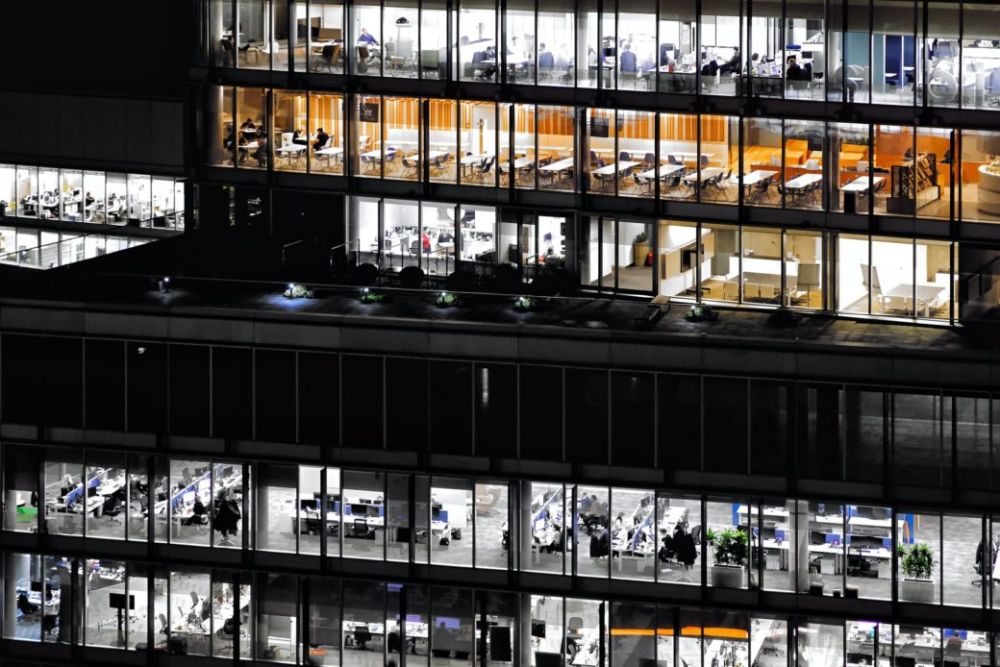- Home
- EN
- Kardham Group
- News
Returning to the office is an opportunity to lay the foundations for a new spatial and managerial organization
May 2021

Headwinds on corporate real estate. The generalization of teleworking has led to both a less frequent need, in certain professions, to go to the site; while the offices must be redesigned to meet new health constraints, and promote collaboration in a context of exhaustion that can be felt in the face of the proliferation of videoconferences. Sophie Pène, Workplace Change director of the Kardham group, specializing in real estate (consulting, architecture, space design), deciphers this new situation.
Tribune published in Business & Marchés on May 4, 2021.
“After these long months of forced teleworking, we foresee the advent of a new balance between the significant development of teleworking and a new desire to come to the office: like any search for a new balance, it is a source of complexity. If employees come to work inside the company less often, it is a question of knowing when to go there and what for. And if it is accepted that the expectations are above all about the social bond, it would be wrong to think only of the social and collaborative function of the office. Companies must take up all the vocations of the workplace to rethink their facilities: a place of cohesion, resources, efficiency but also an embassy place that unites around common interests.
Multiple reasons to come back to the office
Returning to the office first involves freeing yourself from the idea that the corporate body of the company is homogeneous. Employees are not all equal in their willingness or operational need to return to the office. Individuals who work individually could more easily carry out their activity from home, while employees with a collaborative tendency tend to want to return to the company. When the former return, it is mainly to participate in team meetings, while the latter continue to do what they were already doing, which is to go from meeting to meeting. You also have to analyze your expectations in terms of where you feel best to work. Thus, some employees want to return to the office because they are not properly installed at home. The evolution of practices with different reasons for coming to the office according to the profiles therefore resizes the working environments: for all the reasons mentioned above, the workspaces must retain individual work zones, even if generally one notes an increase in the space dedicated to collaborative work with corporate working spaces.
These are aimed both at those who need to sit down between meetings, such as collaborative employees, but also at those who work individually and who come outside of team time. There is also a greater demand for the resources (material library, reprography spaces, etc.) made available, in order to offer an optimal and fluid experience in the place of the company. The notion of time and team territory is also important in these new hybrid arrangements. Thus we now see spaces that can be reserved for the day or the week, where they were previously allocated in the long term. Finally, since the professional appropriation of workspaces is more significant, it is a question of allowing everyone, in particular through flexible furniture, to be able to reconfigure their space, the time of their arrival.
Consider a new user experience
Designing workspaces to make people want to return to the office therefore supposes meeting all the conditions to create a new user experience. In this sense, digital has a strong role to play. It must secure the arrival, facilitate the use of spaces, offer a face-to-face / distance continuum, promote creativity, broaden the possibilities for exchanges, facilitate the sharing of knowledge and simplify collaborative work. In the digital design of workspaces, thinking first about the use rather than the tool is therefore essential. The company must now consider its offices as spaces of use (recreational, reception, individual work, meeting, socialization, etc.) and arrange them according to what each will do there during the course of the year. a day. In addition, it must be taken into account that part of the teams are on site and part remotely and it is unthinkable that the experiences of one or the other will be degraded. Digital is not just a tool for better collaboration from a distance. In business, at home or in a third place, the experience must be fluid and of quality.
Finally, it is essential to support the evolution of managerial practices. It has long been agreed that the work environment is a lever for management. But it's not a magic wand, either. Just because you work in an open space doesn't mean you collaborate more. How to make sure that everyone does not come at the same time but that there are still moments of collective sharing? How to enforce the rules, especially if the spaces are increasingly shared? How to animate the place? How can we organize ourselves so that the flow of information and the sharing of knowledge continue? etc. It is essential to support managers on all of these issues. Some answers already exist, from management by objectives to neuro management, but in general it is a question of co-constructing the methods of returning to the office on a case-by-case basis, according to the corporate culture and the development challenges specific to each organization."

